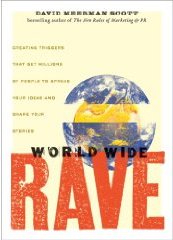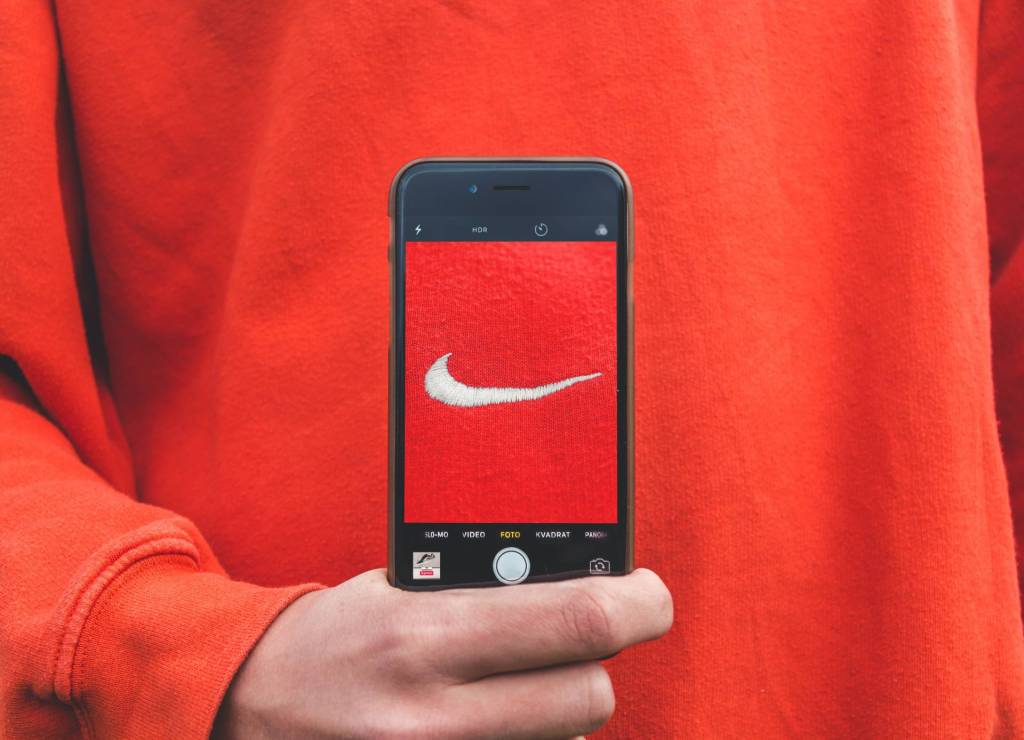Today, I spoke to David Meerman Scott, who is about to release his latest book, World Wide Rave. I’ve spoken to David before in a previous interview that explains much of his position on social media, PR and marketing. He’s all about publishing information (i.e. blogging, podcasting), instead of paying thousands of dollars to advertise. We sat down once again to go over what a World Wide Rave is, how he’s creating one with his book promotion, the new way to get a job (become a publisher) and his scary idea of “lose control of your marketing.” He also released this very cool viral video today that you should check out.
What is the World Wide Rave and out of your five rules for the rave, which one do you think the business world can’t live without now and why? What is your favorite?
“A World Wide Rave is when masses of people around the world can’t stop talking about you, your company, and your products.”
Whether you’re located in San Francisco, Dubai, or Reykjavík, it’s when global communities eagerly link to your stuff on the Web. It’s when online buzz drives buyers to your virtual doorstep. And it’s when tons of fans visit your Web site and your blog because they genuinely want to be there.
Many marketers steeped in the tradition of product advertising naturally feel drawn to prattle on and on about their products and services. But I have news for you.
Nobody cares about your products and services (except you). Yes, you read that right. (That’s my first rule, for many the most surprising, and I think the most critical.)
What people do care about are themselves and how you can solve their problems. People also like to be entertained and to share in something remarkable. In order to have people talk about you and your ideas, you must resist the urge to hype your products and services. Instead, create something interesting that will be talked about online. When you get people talking on the Web, people will line up to learn more and to buy what you have to offer.
When it came to starting to promote your book, you made posters and sent them out across the world, creating a WWR. How did this help compliment your marketing program and what results have you seen?
The whole idea of a World Wide Rave is that the best way to launch a book (or any new product) is to create something worth talking about. So that’s what I wanted to do. However, in this case I felt an added responsibility to implement my own ideas—not just because I thought it would be good for sales, but because it could serve as yet another example of how to put the ideas to work.
I worked with my designer, Doug Eymer, to think of how we can design into the book itself something that would be worth sharing. For instance, might old-time “Wanted” posters be a potential theme? We’re both fans of vintage rock posters, so in the end Doug started playing around with the idea of a rock-poster feel. His initial design concepts were amazing, so that’s what we wanted to go with for the book cover.
With the cover direction confirmed, we talked about executing a guerilla operation where we would put up hundreds of posters in various cities. We figured we’d take photos and share them online. While we liked that idea, we decided it wasn’t participatory enough.
It was then that many of the ideas from the book, the concept of the poster, and the ways that people share ideas came together; we decided to print a bunch of posters and offer them to anyone who wanted one. The more people we brought in on the game, the more help we’d have in spreading the word.
We’ve got over 100 photos and video clips from over 20 countries and all seven continents. It is really cool that people wanted to be a part of a global happening.
The old means of getting a job (applying to corporate website/monster.com) are fading away. Can you give an example showing evidence of the “new rules for getting a job”?
Back in November 2008, I posted on my blog about finding a new job. In the post, I said you have to stop thinking like an advertiser of a product and start thinking like a publisher of information.
Create information that people want. Create an online presence that people are eager to consume. Establish a virtual front door that people will happily link to. And one that employers will find. As I’ve said at every speech I give: “On the web, you are what you publish.” It’s no different when the product is you and you’re looking for a job.
It was really cool that David Murray replied to the post and said he found a new job via Twitter. He hit on a creative way to use Twitter Search in his job search by simply entering keywords and phrases in Twitter Search like: Hiring Social Media, Social Media Jobs, Online Community Manager, Blogging Jobs, etc. He then pulled the RSS feeds of these keyword conversations into Google Reader and made it a habit to check these first thing in the morning everyday. When he found something interesting he used Twitter to make a soft introduction. It wasn’t long before he was hired.
What Murray did and so many others have done, is put himself out there. As a result he was noticed and hired. Would you rather be one of a thousand resumes?
Can you explain the benefit of just passing out free eBook/content, without collecting information?
It all comes down to the goals. For decades, marketers have had a goal of collecting names (via registration forms) so they can then sell and market to those people. You measured on the number of forms submitted.
But I think for many people a better goal is to spread your ideas. How many people can your reach? A million? Ten million? You can measure how many people have downloaded your stuff. How many bloggers are talking about you.
“When you lose control of your marketing by opening up and not requiring a registration, as many as fifty times the number of people will download it compared to the form requirement.”
This is a difficult one for people to make the leap to do, but believe me, it works.
You’ve been talking about inbound marketing, that company’s should hire journalists/writers to build content and more over the past few years. When do you think company’s will finally get it and what are the competitive advantages for company’s getting involved with social media right now?
We’re in the early stages of a revolution and for many people steeped in the traditions of marketing & PR prior to the web, it is going very slowly.
We’re living in a time when we can reach the world directly, without having to spend enormous amounts of money on advertising and without investing in huge public relations efforts to convince the media to write (or broadcast) about our products and services. There is a tremendous opportunity right now to reach buyers in a better way: by publishing great content online, content people want to consume and that they are eager to share with their friends, family, and colleagues.
Traditionalists are scared to death.
I’m not suggesting that companies abandon all their offline marketing. However it is obvious that a primary way that people solve problems today and how they research products & services is to go to the web. If you aren’t visible, you don’t exist. It’s as simple as that.
——–
David Meerman Scott is an award-winning online thought leadership strategist. He is the best seller author of The New Rules of Marketing & PR and his latest book is called World Wide Rave. He is the king of publishing content, with hundreds of articles, videos and training seminars behind him. He is one of the top marketing bloggers and a Twitter user. The marketing programs he has developed are responsible for selling over one billion dollars in products and services worldwide. He has presented at industry conferences and events in more than twenty countries on four continents. David used to be Vice President of marketing at NewsEdge Corporation Way back in the 1990s when Web marketing and PR was in its infancy, he ignored the old rules and created thought leadership strategies to reach buyers directly on the Web.












